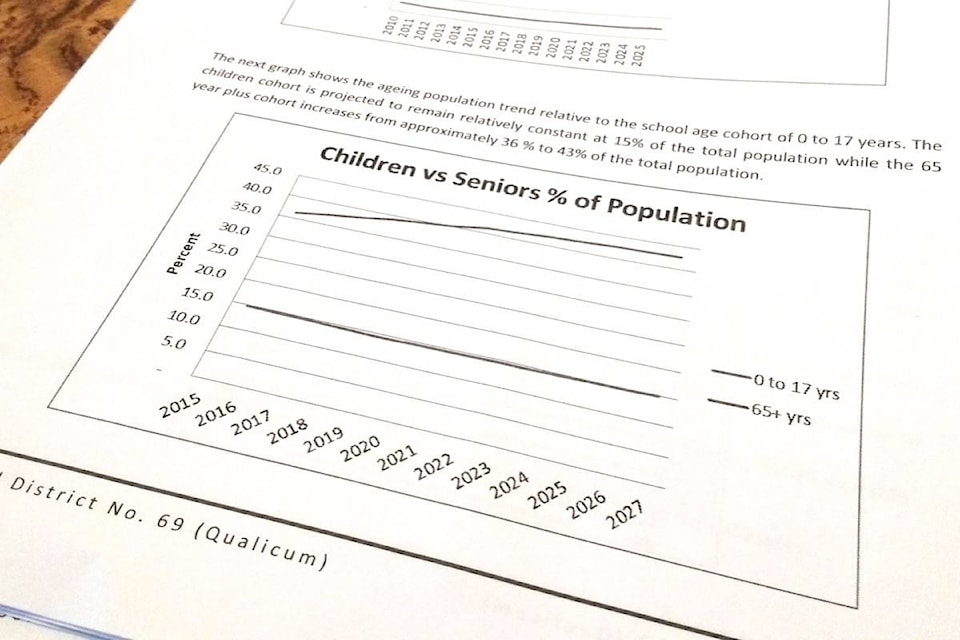While some things change, others stay the same.
That applies to School District 69 (Qualicum), where the overall population in the area is expected to increase, but the number of students is projected to stay about the same into 2031, school trustees learned during a recent meeting.
Unless, that is, ongoing developments in Nanoose Bay attract young families.
Statistics from SD69’s Long-Range Facilities Plan were presented to the board of trustees on Tuesday, Oct. 24.
The plan is meant to help school districts make efficient use of Ministry of Education funding, and monitor use of the funding, said Jim Alkins of Alkins Project Services Inc. who was engaged to update SD69’s plan.
“Your facilities are in relatively good condition,” he said, and also commended the district for the variety of educational opportunities provided to students.
Population and enrolment stats informed part of that assessment and provided a view of the future for the community.
Using both B.C.-wide and SD69-specific statistics, Alkin showed that the Parksville Qualicum Beach area is an extreme example of the aging populations seen across the country, with a much smaller number of young citizens compared to those 50 years old and older.
The general population of the area is expected to grow from about 47,000 in 2016 to 51,000 in 2025.
Nonetheless, the student population is expected to remain constant, at a little less than 5,000 over that same period.
A decrease in student population from 1999 to 2015 reduced enrolment from 5,600 students to 4,070. The maximum projected enrolment is 4,212 by 2024, according to Alkin.
By 2031, the stats show a decrease to 4,100 students. The school population this year is 4,046 full-time-equivalent students.
With the school district’s total capacity at about 4,486, the total utilization rate of the district is at 91 per cent “which verifies the 2014 reconfiguration was very effective,” reads Alkins report.
With the student population expected to remain fairly constant into the next 14 years, SD69 seems well-placed. The only thing that could derail that is projected development plans for Nanoose Bay that could introduced 2,000 new housing units, Alkins noted in the report.
Based on statistics estimating the number of housing units in the district (22,000) and the enrolment of about 4,100 students, the average number of students per housing unit is .186. That means Nanoose Bay development could result in 373 new students.
“If this large development proceeds, in addition to the typical annual small-parcel developments throughout the school district, there is the possibility that a new school site within Nanoose/Electoral Area E will be required,” reads the report. “The development would also impact Nanoose Bay Elementary and Ballenas Secondary schools.”
Send news tips to:
